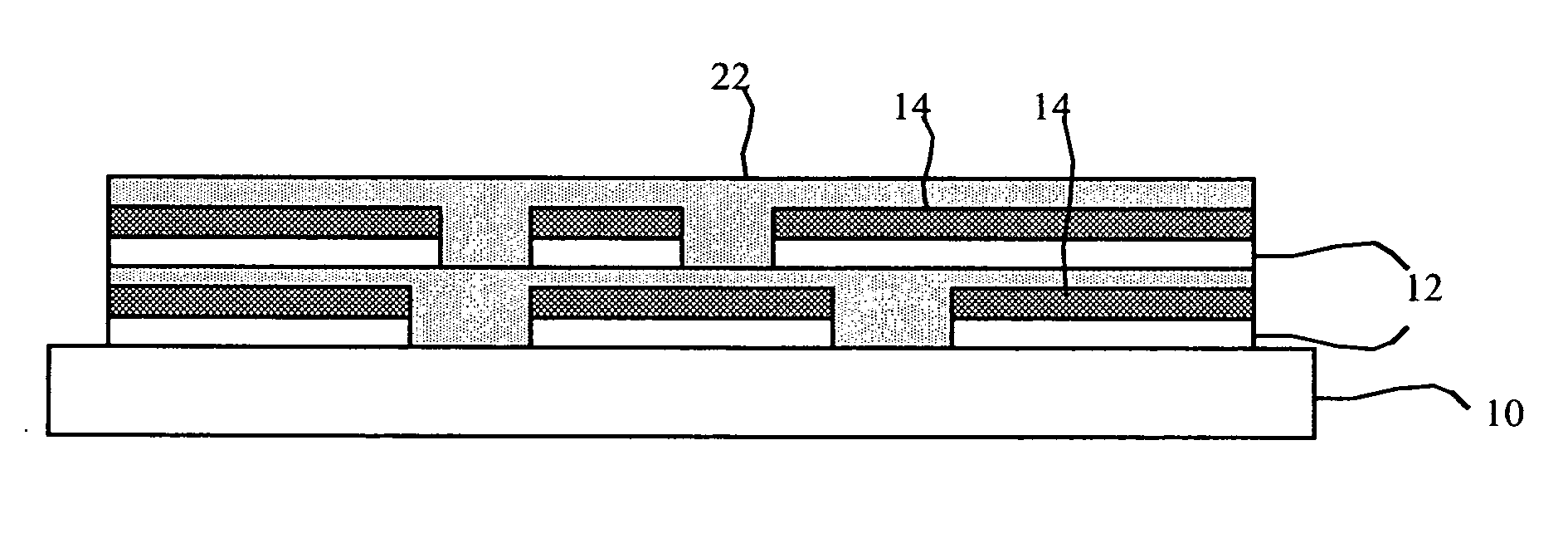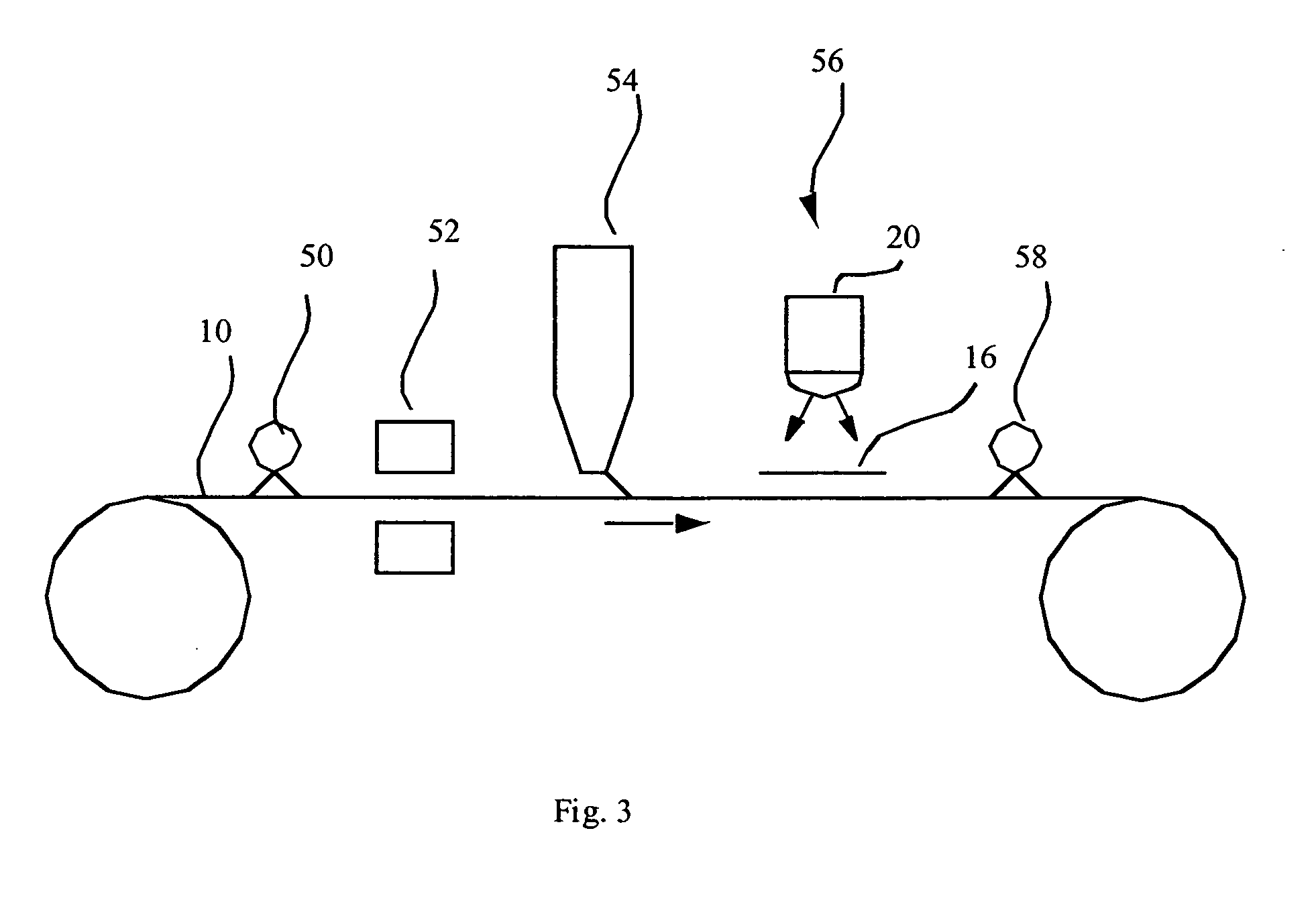Patterned conductive coatings
- Summary
- Abstract
- Description
- Claims
- Application Information
AI Technical Summary
Benefits of technology
Problems solved by technology
Method used
Image
Examples
Embodiment Construction
[0016] Referring to FIG. 1, the present invention is directed to a method for manufacturing a patterned conductive coating 12 formed on a substrate 10. The patterned conductor includes a layer of nano-materials, for example, carbon nano-tube conductors or nano-wires, covered by a patterned polymeric resin binder protective layer 14 to hold the nano-materials in place and to protect them from physical trauma. The polymeric resin binder is cured through exposure to radiation and may be transparent or colored using pigments or dyes to provide light absorbing properties. The colors can be, for example, red, green, blue, cyan, magenta, yellow or black. Carbon black may be used to provide a black colorant that will absorb all colors of light.
[0017] Referring to FIG. 2, the method of the present invention for continuously manufacturing a patterned conductive layer comprises the steps of providing 100 a linearly moving substrate; providing 102 a dispersion containing conductive nano-materi...
PUM
 Login to View More
Login to View More Abstract
Description
Claims
Application Information
 Login to View More
Login to View More - R&D
- Intellectual Property
- Life Sciences
- Materials
- Tech Scout
- Unparalleled Data Quality
- Higher Quality Content
- 60% Fewer Hallucinations
Browse by: Latest US Patents, China's latest patents, Technical Efficacy Thesaurus, Application Domain, Technology Topic, Popular Technical Reports.
© 2025 PatSnap. All rights reserved.Legal|Privacy policy|Modern Slavery Act Transparency Statement|Sitemap|About US| Contact US: help@patsnap.com



